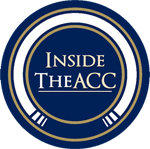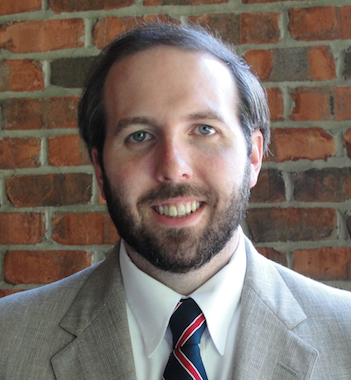Big THANK YOU to all our donors whose support makes facilities like this possible! #CelebrateSU pic.twitter.com/QgcGuoEX0k
— Syracuse Football (@CuseFootball) March 21, 2016
The Orange have a new football coach and with it comes the faintest glimmer of hope for a program that has lacked such emotion for a few years. Syracuse was one of the first schools to start spring practice, aided both by a new indoor practice facility and an unseasonably warm winter that may be a harbinger of optimism in upstate New York.
Dino Babers has the challenge of resurrecting a program that had stagnated under former defensive coordinator Scott Shafer. Babers will look to run an up-tempo offense with his form of Baylor’s run-heavy veer and shoot.
It’s a hurry-up spread offense that Art Briles has used to near-perfection at Baylor. The Bears utilized the system to finish second in the nation in rushing in 2015-16 with 326.7 yards per game (4,247 yards total) and 5.95 yards per carry. By contrast the Orange finished 77th in rushing with 163.2 yards per game. It flies in the face of a traditional rushing attack in that Baylor moves as quickly as possible to prevent defensive substitutions whereas traditional running teams use the run to control the clock. We’ve seen this wide open rushing style more and more in the ACC with Clemson and North Carolina, two teams that also like to spread out the defense and run the ball.
Downfield passing should be more common as well and after last season, the Orange have no shortage of tested quarterbacks to send those passes on their way. True sophomore Eric Dungey is likely the starter though Babers hasn’t formally announced his plans at the position yet. Dungey has a good combination of arm strength, mobility, and toughness that give him the advantage in the battle to run the new offense.
Babers’ quarterbacks have averaged 4,248 yards, 36 touchdowns, and 7.9 yards per completion in his four seasons as a head coach. The run game opens up the passing game and the Babers/Baylor system utilizes simple routes and reads for relatively easy yardage downfield. Baylor for example was 24th nationally in passing last season in addition to the gaudy rushing numbers. The system is straight-forward enough that Babers doesn’t use a playbook. They install the plays on the field and then just repeat the process until people catch on to the reads and adjustments that will have to be made at the line.
In addition to proven quarterbacks, the Orange have a number of returning receivers who could thrive in this simplified passing scheme. Hybrid running back/receiver Ervin Philips led the team in touchdowns last season with eight (3 rushing, 5 receiving) in just nine games and is expected to be one of the top contributors after an encouraging spring. Speedy wideout Alvin Cornelius has had a strong spring as well, repeating his performance from a year ago. His season was never able to get off the ground however after he suffered a hamstring injury at the start of fall camp last season. Last year’s leading receivers Steve Ishmael and Brisly Estime also return, giving the offense quite a few promising targets.
While the team’s record may not significantly improve next season, it would be a surprise if the team’s scoring leader among non-kickers finishes with only eight touchdowns.
One big question surrounds the offensive line which has to replace three starters from last season. Strength and conditioning is always paramount for the lineman, but it will be even more critical in a system that asks a lot of the guys up front. They need to be big and physical while maintaining endurance and the ability to explode off the line.
Overall, the offense should be more focused than in recent seasons when the Orange attempted to combine elements of several offenses into one functioning system. It will take all of spring practice, summer workouts and fall practice for the system to become second nature, but once it does Syracuse has the potential to impress with the talent on offense.
Video: Freshman DE Kenneth Ruff works on getting off the line pic.twitter.com/SNaaZoI5c4
— Stephen Bailey (@Stephen_Bailey1) March 3, 2016
The defense is undergoing big changes as well with the installation of the Tampa-2 scheme. That means fewer blitzes and more zone coverage in the secondary which is quite a shift from the aggressive style employed during Shafer’s time as head coach and defensive coordinator before that.
Last season was not a strong one for an Orange defensive unit that finished 98th in total defense — for comparison, Babers’ Bowling Green squad was 86th. That doesn’t mean there wasn’t talent in that group. Junior linebacker Zaire Franklin returns as the likely starter at middle linebacker after being named just the fourth sophomore captain in Syracuse history and leading the team in total tackles with 81 last season.
He’ll have to adjust to dropping into coverage more, while the defensive backs will need to balance their zone coverages with helping in the run game. Interestingly enough, the transition has gone prety smoothly to hear the players describe it.
Senior linebacker Ted Taylor told the press that the Tampa-2 defense isn’t as hard as the old system and went so far as to mention, “…I’m not saying it’s simple, but it’s pretty easy.”
They also have the added benefit of being tested by fire in against the rapid pace of the new offense in practice. That should help prepare them for the myriad of offenses in college football now emplying similar styles.
The Syracuse spring football game is scheduled for Saturday, April 2 at 11 a.m. in the Carrier Dome.
Like Inside The ACC on Facebook and check out @InsideTheACC.



